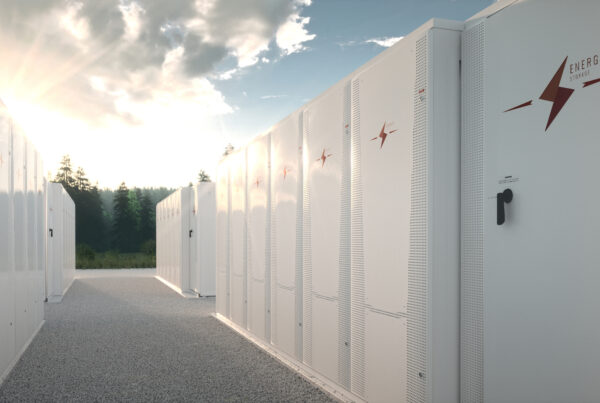
- Europe is on track to install at least 95 GW of grid-scale battery energy storage systems1 by 2050, compared to 5 GW of installed capacity today, representing over 70bn € in investment, Aurora Energy Research forecasts in the new edition of its European Battery Market Attractiveness Report.
- The five most attractive markets for battery storage in Europe are (in alphabetical order) Germany, Great Britain, Greece, Ireland and Italy, Aurora assesses, considering factors such as policy support, revenue stacking opportunities and demand for low-carbon flexible energy.
- There is ample scope to increase the size and investment opportunities of European battery markets: 14 of the 24 countries assessed do not yet have a strategy or targets for energy storage deployment, Aurora finds.
- The second edition of Aurora’s European Battery Market Attractiveness Report is available now—download the redacted version here and get in touch for further information.
Energy storage is a critical enabler of decarbonisation in Europe. Governments’ dual ambitions of reducing greenhouse gas emissions and raising energy independence are fuelling buildout of renewable power generation on an unprecedented scale, resulting in power systems’ increasing reliance on variable generation. Battery energy storage systems (BESS) complement the variability of renewable power generation, ensuring that power systems remain reliable and replacing the gas- and coal-fired plants currently providing essential balancing services.
The vital role that batteries can play in the European power sector’s decarbonisation is set to drive a surge in installations over the next few decades—installed grid-scale capacity will rise to 42 GW by 2030, and at least 95 GW by 2050, compared to the 5 GW installed across the continent today, Aurora Energy Research forecasts. These capacity additions represent a cumulative investment opportunity of over 70bn € between 2023 and 2050. Over 40% of this capital will be deployed by the end of 2030, Aurora calculates. The average battery duration will increase over time, due to growing demand for longer storage as renewable power generation increases. Batteries with over four hours’ storage capacity will account for 61% of total installed battery capacity in 2050, compared with 22% in 2025, Aurora’s modelling shows.
In order to deploy batteries on the scale that Europe’s decarbonisation ambitions require, markets have to be attractive to investors. The five most attractive battery markets in Europe are (in alphabetical order) Germany, Great Britain, Greece, Ireland and Italy, Aurora assesses. Key drivers of market attractiveness include policy and regulatory support, such as specific battery storage targets or rollout plans; financing mechanisms, such as subsidy schemes or opportunities for participation in flexibility or capacity markets; and the outlook for renewable power generation—the higher the share of renewables in a power system, the greater the demand for batteries. Ambitious deployment targets have boosted Greece and Italy’s attractiveness—Greece aims to install 6 GW of battery storage by 2030, the highest target in Europe—while good revenue stacking opportunities, where battery operators optimise between markets, supported Great Britain and Ireland’s rankings. Battery developers can secure revenues through Britain’s Capacity Market auctions, for example, or Ireland’s DS3 programme.2 Germany’s position reflects the projected growth of its installed renewable power generation capacity over the next two decades, set to surpass all of the other 23 countries considered by Aurora.
The immense investment opportunity presented by Europe’s need for batteries has scope to grow further. Despite the strict decarbonisation targets across the continent, 14 of the 24 countries assessed do not yet have a national strategy or targets for energy storage deployment. Aurora considers only six of the countries assessed to have strong government commitments in place, such as Italy’s target to install 3 GW of long-duration batteries by 2030, or Spain’s plan to deploy 2.5 GW of battery storage by 2030. Policy support is not a dealbreaker—the German government has not published a strategy or specific targets for deploying batteries—yet can be an important driver of attractiveness, especially in markets with less favourable economics to support unsubsidised projects. For example, policy to address network charges in the Netherlands, a significant obstacle to the viability of battery projects in the country, would be pivotal to battery market attractiveness. Buildout will also be shaped by the evolution of aggregated electric vehicle storage and innovation in long-duration energy storage technologies.
Ryan Alexander, Research Lead, European Power Markets, Aurora Energy Research, commented:
“Batteries represent an attractive investment opportunity in Europe’s energy sector—new projects are announced on a near-daily basis as developers seek to capitalise on the need for storage in the energy transition. There will undoubtedly be an early mover advantage for investors: the anticipated surge in demand for batteries over the next decades creates saturation risk, causing revenues to decline as markets become overcrowded. Aurora’s European Battery Markets Attractiveness Report helps investors navigate entry into new markets and maximise their competitive advantage in an increasingly crowded space.”
Anu Omojola, Flexibility Product Lead, European Power Markets, Aurora Energy Research, commented:
“Battery storage is a game changer for the #energytransition. However, policymakers across Europe need to take urgent action to enable capacity deployment. Key regulatory challenges around grid connection, network charges, long-term contractability and ancillary services remuneration pose significant risks to the rapid buildout of battery capacity across the continent.”
1 Defined as utility-scale (>10 MW) battery storage projects directly connected to electricity transmission systems, or the grid, i.e. front of the meter assets
2 The “Delivering a Secure, Sustainable Electricity System” (DS3) programme was established by the Irish and Northern Irish transmission system operators in 2018 to incentivise the development of ancillary services, in order to reinforce the all-island power system and accommodate the growing share of renewable generation. Under the current regime, battery projects can receive payments for reserving their capacity for DS3 services.
– ENDS –
MEDIA CONTACT
Megan Tracey, European Press Officer
megan.tracey@auroraER.com | +44 (0)7810 817354
ABOUT AURORA
From its Oxford academic roots, Aurora Energy Research has grown to become the largest dedicated power market analytics company in Europe, providing data-driven intelligence for strategic decisions in the global energy transformation. We are a diverse team of more than 400 experts with vast energy, financial, and consulting backgrounds, covering power, hydrogen, carbon, and fossil commodities. We are active in Europe, Australia, and the US, working with world-leading organisations to provide comprehensive market intelligence, bespoke analytic and advisory services, and cutting-edge software.






